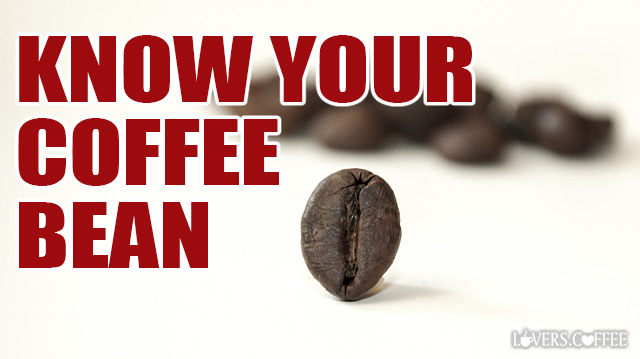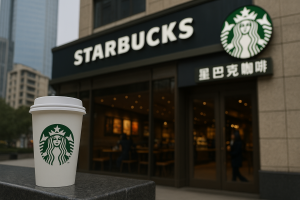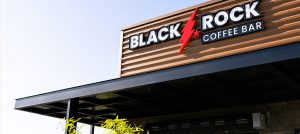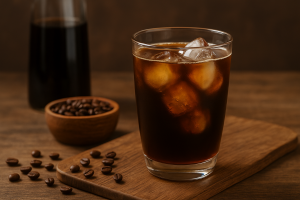
The Four Types Of Coffee Beans
The Four Types Of Coffee Beans
- Shelli Galici
- 25-04-2018
- 29-07-2025
- 2259 views
- Coffee Tips, Featured Articles, How To's, Information, Travel

Drinking coffee is our daily dose of happiness that is why knowing the difference between each coffee beans is crucial to making our perfect cup of coffee.
Let’s finds out the characteristics of the four main types of coffee beans currently in commercial circulation: Arabica, Robusta, and the less common Liberica and Excelsa coffee beans.
Arabica (Coffea arabica)

Coffee Arabica is the most popular coffee beans in the world; it accounts for over 60% of the world’s coffee production.
Coffee Arabica is the most popular coffee beans in the world; it accounts for over 60% of the world’s coffee production. Arabica beans are easy to cultivate for they are relatively small and easy to prune.
Coffee Arabica propagates at high altitudes in the areas that receive even amount of rainfall, and have a plenty amount of shade. Though these beans are easy to take care, they are the most sensitive to the four coffee beans. Thay is prone to diseases especially when grown in large groups where the coffee trees are more susceptible to an outbreak of disease, such as blight, that will inevitably contaminate the entire crop.
Higher quality of Arabica beans has a bright body, more acidic, and have a multi-layered intricacy of flavours and aromas. The taste is best to sample on the front palate where sweetness and salinity are most apparent. Coffee Arabica is best to serve hot, but its boldness may lessen when served cold or with creamer.
The popular types of Arabica beans are; Typica, Caturra, Bourbon, and Blue Mountain.
Robusta (Coffea canephora)

Coffee Robusta is more acidic than Coffee Arabica it has doubled the acid level of it this is because the caffeine acts as the defence mechanism
Coffee Robusta comes second with the Coffee Arabica when it comes to the types of coffee.
Coffee robusta is low maintenance compared to Coffee Arabica that is sensitive to diseases. Robusta is tolerant of its environment, and withstand a myriad of altitudes, but requires a hot climate.
Coffee Robusta is more acidic than Coffee Arabica it has doubled the acid level of it this is because the caffeine acts as the defence mechanism of the Robusta Coffee to fight against environmental diseases.
Higher quality Robusta beans have a smooth texture, low acidity, and often have hints of chocolate associated with their flavour profile. Coffee Robusta is best to taste at the back of your palate where the bitter nodes are situated.
When buying Robusta beans always check the information below of the packaging to check its coffee origin. Some coffee farmers take advantage of Robusta popularity and grow the bean in a hostile climate that produces a substandard product; that’s why if your robusta tastes like rubbery with a flat smell, you might purchase a low-quality Robusta bean with substandard cultivation.
Robusta is ideal for cream and sugar lovers. A good quality Robusta will not lose flavour when adding milk or sugar (making it a great candidate for Vietnamese Coffee and Iced Coffee).
Liberica (Coffea liberica)

In 1890, Coffee Liberica played an important role in the history of coffee where coffee rust decimated over 90% of the world’s Arabica stock.
Coffee Liberica is not popular as Arabica and Robusta, and it is harder to find this type of coffee beans these days. In 1890, Coffee Liberica played an important role in the history of coffee where coffee rust decimated over 90% of the world’s Arabica stock. Scrambling to find a solution, farmers and government agents alike turned to the Liberica plant; the first country to propagate into this idea was the Philippines (which was a U.S. territory at the time). This decision greatly helped the Philippines’ economy as they were the only coffee supplier for a time.
But after the Philippines gained their independence from the U.S the demand of the coffee liberica has cut down, and it wasn’t until 1995 that Liberica made an appearance in the coffee world again. Sadly, this effort did not thrive because the Coffee Arabica already took the crown as the reigning coffee varietal of the world. Today coffee liberica is hard to find, and we can only see them in some region in the Philippines who grow coffee.
Liberica is the only coffee bean in the world with an irregular shape, often asymmetrical with large coffee beans. The beans are said to have a unique aroma, has floral and fruity notes, with a full body that possesses a smoky taste. People who tried Liberica coffee says that “it is unlike any coffee they have ever tasted, it does not even taste like coffee, stating that it tastes too “woody”.
Excelsa (Coffee excelsa or Coffea liberica var. dewevrei)
Coffee Excelsa is a family of Coffee Liberica. Excelsa grows mostly in Southeast Asia and accounts for a mere 7% of the world’s coffee circulation.It was re-named as a genus of Liberica because it grows on large 20-30 ft trees like Liberica at similar altitudes and has a similar almond-like shape.
It is largely used in blends in order to give the coffee an extra boost of flavour and complexity, better affecting the middle and back palate. Excelsa possesses a tart and fruity body which flavours reminiscent a light and dark tasty roast. This mystery lures coffee drinkers from around the world to try and seek out the varietal.






















